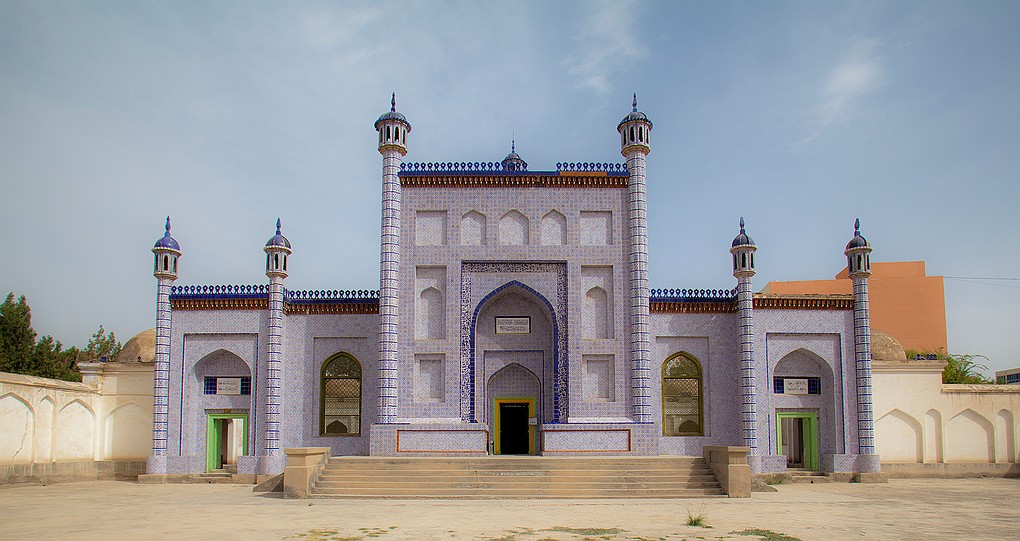World's Most Polluted Cities 2023: Hotan and Kashgar, China
World's Most Polluted Cities 2023: Hotan and Kashgar, China
Uyghur Heritage
Overview
Hotan and Kashgar in China are among the world's most polluted cities in 2023. Hotan is ranked the 13th most polluted city globally and the most polluted city in China. Kashgar is ranked the 42nd most polluted city globally and the second most polluted city in China. This document provides a detailed analysis of the air quality, pollutants, and reasons behind their high pollution levels, including the impact of historical nuclear tests, irregular use of water resources, and uneven demographic movement.
Hotan
Hotan: 13th Most Polluted City in the World
Air Quality in Hotan
Hotan has inferior air quality, with significant concentrations of various pollutants. The Air Quality Index (AQI) and concentrations of PM2.5 and other pollutants highlight the severe pollution levels in the city.
Pollutant Concentrations in Hotan
• PM2.5: 84 µg/m³
• PM10: 377 µg/m³
• O3 (Ozone): 76 µg/m³
• NO2 (Nitrogen Dioxide): 17.5 µg/m³
• SO2 (Sulfur Dioxide): 10.5 µg/m³
• CO (Carbon Monoxide): 600 µg/m³
PM2.5 Impact
The PM2.5 concentration in Hotan is 16.8 times the World Health Organization's (WHO) annual air quality guideline value, indicating a significant health risk.
Reasons for High Pollution in Hotan
1. Desert Dust: Hotan is located near the Taklamakan Desert, and strong winds often carry dust and sand into the city, contributing significantly to high PM10 and PM2.5 levels.
2. Industrial Emissions: Local industries, including mining and manufacturing, release substantial pollutants into the air.
3. Traffic Emissions: Increasing vehicle use contributes to elevated levels of NO2 and CO.
4. Burning of Biomass and Coal: Using coal and biomass for heating and cooking adds to PM2.5, SO2, and CO levels.
5. Historical Nuclear Tests: The Lop Nur Test Base in Xinjiang was a site for nuclear tests from 1964 to 1996. Radioactive fallout from these tests could have contributed to long-term environmental contamination, increasing the particulate burden and posing health risks.
6. Irregular Use of Water Resources: Inefficient and unsustainable water use practices in agriculture and industry can exacerbate dust and pollution levels, as water scarcity can lead to increased desertification and dust storms.
7. Uneven and Poor Demographic Movement: Rapid and unplanned urbanization, along with inadequate infrastructure, can lead to increased pollution due to insufficient waste management, higher vehicle emissions, and concentrated industrial activity in certain areas.
Health Recommendations for Hotan
• Avoid outdoor exercise Due to high pollution levels.
• Close windows To prevent dirty outdoor air from entering.
• Wear a mask To reduce inhalation of pollutants when outdoors.
• Use an air purifier To improve indoor air quality.
Kashgar
Kashgar: 42nd Most Polluted City in the World
Air Quality in Kashgar
Kashgar also experiences high levels of air pollution, but it is less severe than Hotan. The primary pollutant in Kashgar is PM10, with moderate AQI levels.
Pollutant Concentrations in Kashgar
• PM2.5: 7.5 µg/m³
• PM10: 59.5 µg/m³
• O3 (Ozone): 95 µg/m³
• NO2 (Nitrogen Dioxide): 16.5 µg/m³
• SO2 (Sulfur Dioxide): 3 µg/m³
• CO (Carbon Monoxide): 350 µg/m³
PM2.5 Impact
The PM2.5 concentration in Kashgar is 1.5 times the WHO annual air quality guideline value, indicating a moderate health risk.
Reasons for High Pollution in Kashgar
1. Desert Dust: Like Hotan, Kashgar is also affected by dust from the Taklamakan Desert.
2. Industrial Activities: Local industrial activities contribute to the emissions of various pollutants.
3. Traffic Emissions: Vehicle emissions are a significant source of air pollution, particularly NO2 and CO.
4. Construction Activities: Ongoing construction projects increase the levels of particulate matter in the air.
5. Historical Nuclear Tests: The proximity to Lop Nur Test Base means Kashgar may also experience residual effects from past nuclear tests, contributing to environmental and health concerns.
6. Irregular Use of Water Resources: Overuse and mismanagement of water resources contribute to increased desertification and dust pollution.
7. Uneven and Poor Demographic Movement: Like Hotan, rapid urbanization and insufficient infrastructure in Kashgar lead to concentrated pollution sources, inadequate waste management, and increased vehicular emissions.
Health Recommendations for Kashgar
• Sensitive groups should reduce outdoor exercise To avoid exposure to pollutants.
• Close windows: To prevent dirty outdoor air from entering.
• Wear a mask: Sensitive groups should wear a mask when outdoors.
• Use an air purifier: Sensitive groups should use an air purifier indoors to reduce pollution exposure.
Conclusion
Hotan and Kashgar face significant air pollution challenges due to natural and human-made factors. Desert dust, industrial emissions, traffic pollution, and burning coal and biomass contribute to these cities' high levels of pollutants. Additionally, the legacy of nuclear tests at Lop Nur, irregular use of water resources, and uneven demographic movement exacerbate the environmental stress and health risks. The severe air pollution poses serious health risks to residents, necessitating measures such as avoiding outdoor activities, closing windows, wearing masks, and using air purifiers to mitigate the adverse health effects. Continuous monitoring, research, and remediation efforts are essential to address this complex pollution scenario's immediate and long-term health risks.
2017-2023
World's most polluted cities
Most polluted city ranking based on annual average PM2.5 concentration (μg/m³)




Comments
Post a Comment